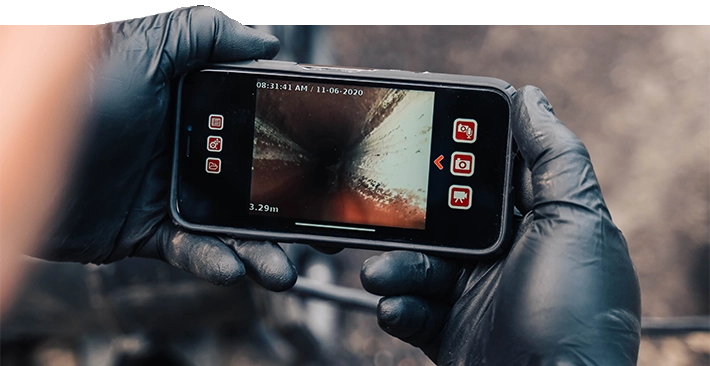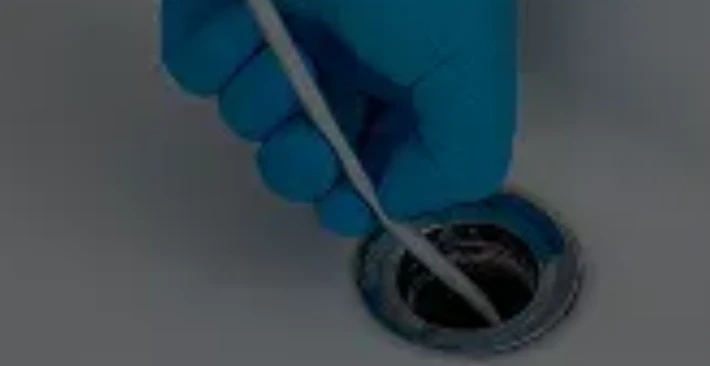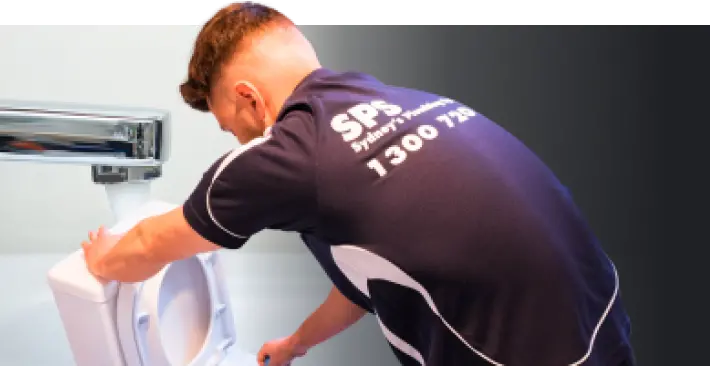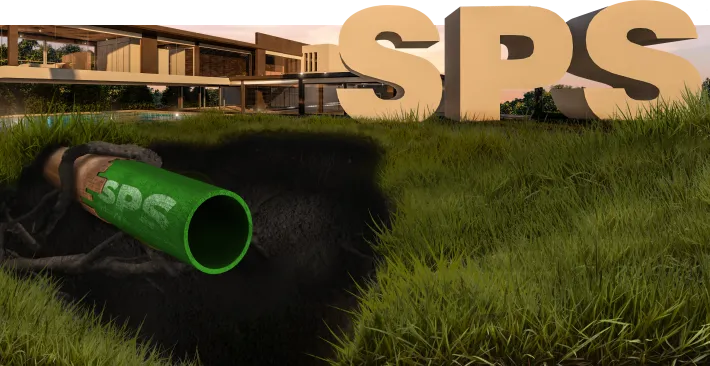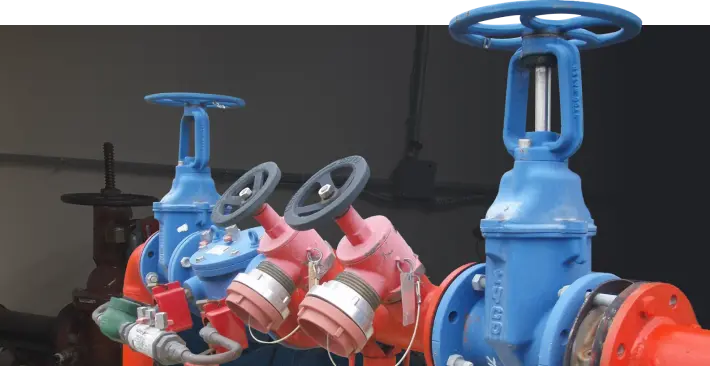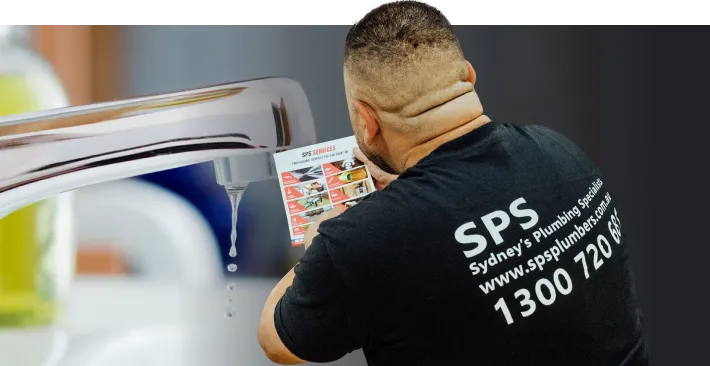We get it. You’re a capable Sydney homeowner. When a common plumbing problem rears its head, your first instinct might be to grab the tools and tackle it yourself. You’re thinking about saving on the call-out fee, and that’s an admirable goal. But as the master plumbers at SPS Plumbing who have been servicing Sydney homes for over a decade, we’ve seen the aftermath of well-intentioned DIY jobs that have gone sideways. The truth is, some DIY plumbing mistakes can turn a simple, affordable fix into a five-figure disaster involving water damage, mould remediation, and major pipe replacements.
This guide isn’t meant to scare you off; it’s meant to empower you. Knowledge is your best tool. We’re going to walk you through the ten most frequent plumbing issues we’re called to fix, explain exactly why they fail, and show you the right way to handle the situation. Consider this your essential briefing before you pick up that spanner.
If you’re reading this and already have a sinking feeling about a recent DIY project, stop right there. It’s always cheaper to call a pro for an assessment now than for an emergency repair later. Give SPS Plumbing a call on (02) 9072 0760 or book a professional assessment online for a straightforward, honest opinion.
Mistake 1: The Drain Cleaner Disaster
The Mistake
Pouring a bottle of caustic, chemical drain cleaner down a blocked sink, shower, or toilet drain. It’s the go-to solution for many at Bunnings, promising a quick and easy fix.
The Result
You might think these powerful chemicals are dissolving the blockage, but they’re also dissolving your pipes. This is especially catastrophic in older Sydney homes with delicate galvanised iron or even older PVC pipes. The heat generated by the chemical reaction can warp plastic pipes and destroy rubber seals and gaskets. Worse yet, if it doesn’t clear the clog entirely (and it often doesn’t), you’re now left with a toxic, corrosive slurry sitting in your pipes, accelerating corrosion and creating a much more expensive common plumbing issue for a professional to handle.
The Right Way
For a sudden blockage, use a quality plunger with a good seal. For recurring slow drains, the problem is likely in the P-trap (the U-bend under the sink). Place a bucket underneath, unscrew the connectors, and manually clear the gunk. For tougher blockages further down the line, a hand-cranked drain auger (or snake) is a far safer and more effective investment than a bottle of chemicals. For a complete guide, see our article on 9 effective methods to clear a blocked drain.
Mistake 2: The Overtightening Catastrophe
The Mistake
Thinking that “tighter is better” and cranking a fitting with all your might using the biggest wrench you can find.
The Result
Plumbing fittings are precision instruments. Overtightening a compression fitting (common on tap connectors) crushes the brass olive, often cracking it and causing an immediate leak. On threaded fittings, you can strip the threads, crack the fitting itself, or warp the pipe. This creates a hairline crack that may not leak immediately but will fail catastrophically under pressure, often when you’re not home.
The Right Way
The golden rule is hand-tight plus a quarter to a half-turn with a spanner. You want to feel the fitting compress and seat properly, not winch it into oblivion. A proper seal comes from the washer or olive, not brute force.
Mistake 3: The Backwards Teflon Tape Fumble
The Mistake
Wrapping Teflon tape (thread seal tape) around pipe threads in a counter-clockwise direction.
The Result
When you screw the fitting on (which is a clockwise motion), the incorrectly applied tape will just unravel, bunch up, and fail to create a seal. This leads to an immediate leak the moment you turn the water back on.
The Right Way
Always wrap the tape clockwise around the male threads, following the direction you will be screwing the fitting on. 2-3 wraps is usually sufficient. Pro Tip: In Australia, remember the tape colour code: white is for standard water lines, yellow is for gas lines (which is a job strictly for a licensed gasfitter!).
Mistake 4: The "Wrong Part" Shortcut
The Mistake
Using a washer, O-ring, or valve that “looks about right” from your random jar of spare parts instead of getting an exact match.
The Result
An almost-right part will not seal correctly. It will lead to premature failure, drips, and a return of the leak, wasting all the time and effort you just put in. It can also degrade faster, contaminating your water or causing a larger burst.
The Right Way
Take the old, failed part to your local hardware store or plumbing supplier to get a perfect match. Pay attention to the diameter, thickness, and material. A few extra minutes ensuring you have the correct part saves hours of repeat work. If you're specifically trying to fix a leak, our step-by-step guide to fixing a leaking tap covers these pitfalls in greater detail.
Mistake 5: The "I Forgot to Turn the Water Off" Flood
The Mistake
Starting a repair on a tap or toilet without first isolating the water supply to that fixture—or worse, not knowing where your main water shut-off valve is located.
The Result
An indoor flash flood. Water damage to cabinetry, flooring, and ceilings is incredibly expensive to repair and can lead to dangerous mould growth, a serious health hazard. We’ve been called to too many Sydney homes where this simple oversight has caused tens of thousands of dollars in damage.
The Right Way
Before you start ANY project, locate the isolation valve for the fixture (usually located nearby). If it’s old or stiff, turn it off gently (see Mistake #6). For major work, locate your main water shut-off valve—often found near the water meter at the front of your property—and test it to ensure it turns freely.
Mistake 6: Forcefully Seizing Shut-Off Valves
The Mistake
Finding a stiff, old gate valve that hasn’t been turned in years and forcing it closed with a wrench.
The Result
The internal stem, weakened by years of corrosion, snaps off. Instead of stopping the water, you now have a high-pressure jet of water spraying from a broken valve with no way to stop it except at the main. This becomes a genuine plumbing emergency requiring an urgent and costly replacement. In this scenario, you need to call an emergency plumber in Sydney immediately.
The Right Way
If a valve is stiff, don’t force it. Often, gently loosening the packing nut first (the nut around the stem) will allow you to turn the valve without breaking it. If it doesn’t budge with gentle pressure, it’s time to call a tradie.
Mistake 7: Ignoring the Dangers of Sewer Gas
The Mistake
After removing a P-trap to clear a drain, not refilling it with water before reconnecting, or using incorrect fittings that don’t maintain a proper water seal.
The Result
That foul, rotten egg smell in your home is sewer gas. The water in the P-trap is designed to block these gases from entering your living space. Without it, you’re not only exposing your family to unpleasant odours but also to potentially harmful methane and bacteria. This is a common plumbing issue after a DIY drain clean.
The Right Way
Always run water down the drain after reassembling a P-trap to ensure the seal is restored. For any new installations, understand that drains require specific fittings (like wyes, not tees) and venting to function correctly and prevent siphoning the water out of the traps.
Hitting a complex problem? Tasks involving drainage and venting are where DIY often meets its match. This is the perfect time to call SPS Plumbing. Our experts understand Australian standards and can ensure your system is safe and functional.
Mistake 8: Using the Wrong Tools
The Mistake
Using an adjustable spanner for everything, using mole grips on chrome fittings, or using a pipe as a “cheater bar” for extra leverage.
The Result
Rounded-off nuts, deeply scratched and ruined chrome finishes on your expensive tapware, and broken fixtures. The wrong tool often does more damage than good, turning a simple washer replacement into a full tap body replacement.
The Right Way
Invest in a few basic, quality tools. A set of correctly sized spanners, basin wrenches for tight spaces under sinks, and a proper pipe wrench will make your jobs easier, cleaner, and more successful.
Mistake 9: Soldering on Wet Pipes (Sweating Joints)
The Mistake
Trying to solder (or ‘sweat’) a copper joint without properly draining the water line.
The Result
Water and intense heat create steam. This prevents the solder from properly flowing into the joint, creating a weak, pitted, and porous connection that is guaranteed to leak, either immediately or soon after you pressurise the system.
The Right Way
Isolate and drain the line completely. Use a piece of bread (yes, bread!) pushed through the pipe to temporarily soak up residual droplets, or use compressed air to blow the line completely dry before heating.
Mistake 10: Installing Saddle Valves
The Mistake
Using a self-tapping saddle valve (a clamp-like fitting that pierces a water line) to connect appliances like fridges or ice-makers.
The Result
Saddle valves are notoriously unreliable. The piercing needle often corrodes over time, and the rubber seal deteriorates, leading to a guaranteed slow leak inside your wall or under your floor. This hidden leak can cause severe structural rot and mould long before you ever notice it.
The Right Way
The professional solution is to install a proper, dedicated tee fitting with a shut-off valve soldered or clamped into the main water line. This creates a robust, reliable, and permanent connection.
Knowledge is Power: Protect Your Sydney Home
Understanding these common plumbing issues and why they happen is the first step to prevent plumbing issues and protect your home and your wallet. DIY can be rewarding for the right small jobs, but knowing your limits is the mark of a true expert.
If any of these mistakes sound familiar, or if you’ve started a project and feel out of your depth, the most powerful tool you can use is your phone. Calling a licensed, professional plumber is not a defeat; it’s a smart investment in the long-term health of your property.
The team at SPS Plumbing has seen it all and fixed it all across Sydney. We offer transparent, upfront pricing and expert workmanship you can trust. You can view our comprehensive plumbing services to understand how we can solve your specific problem. Don’t let a DIY mishap turn into a disaster. Call SPS Plumbing today on (02) 9072 0760 or book online for a professional, lasting solution.






